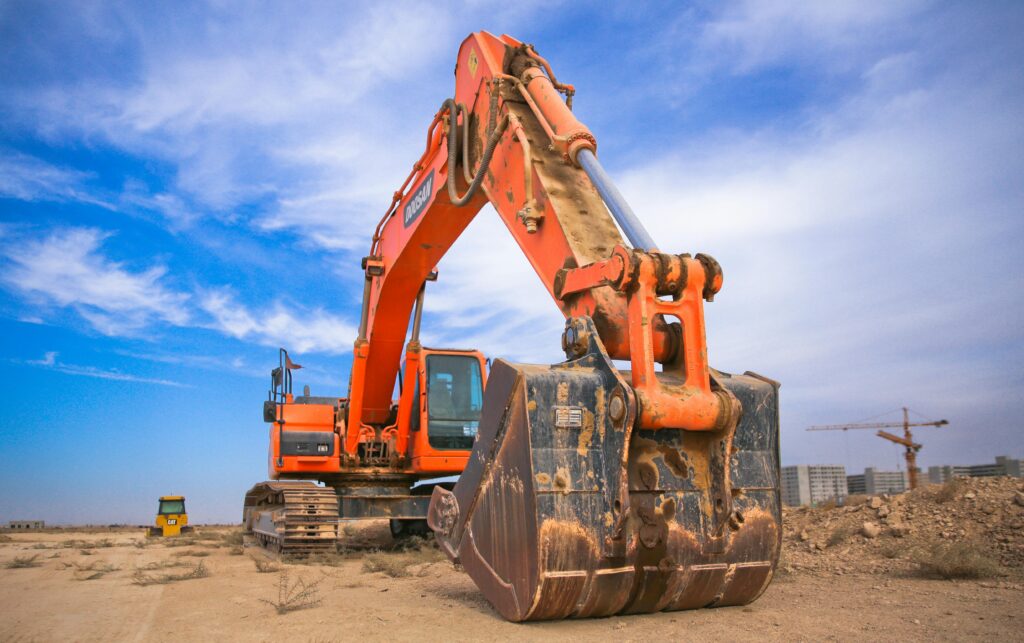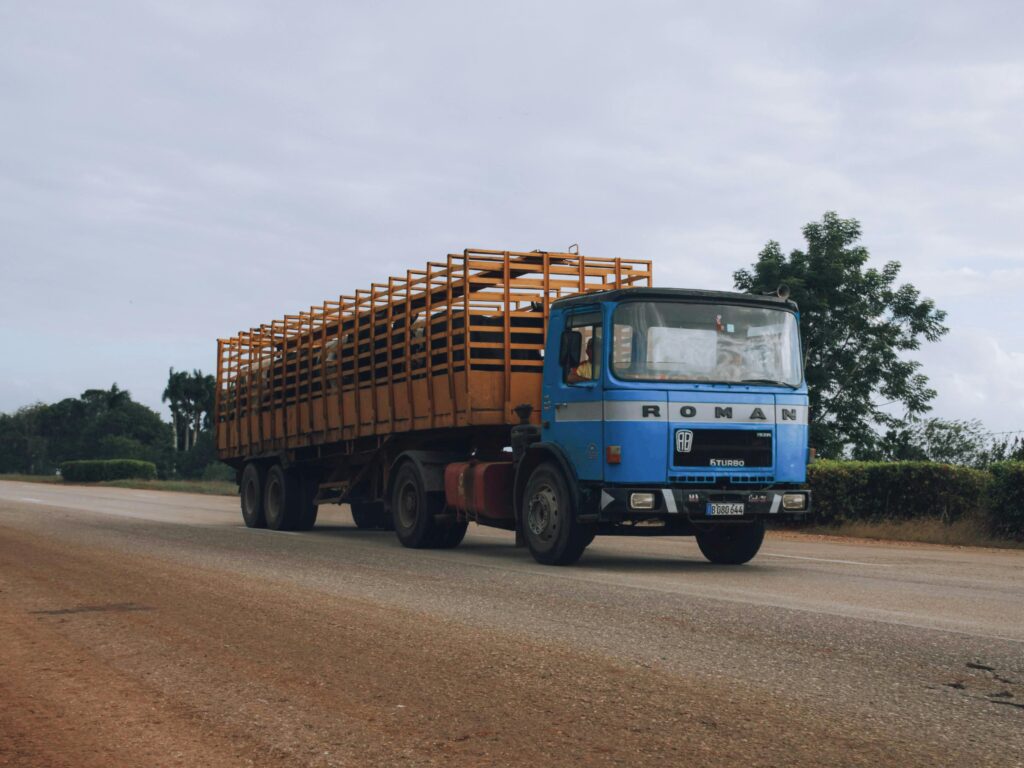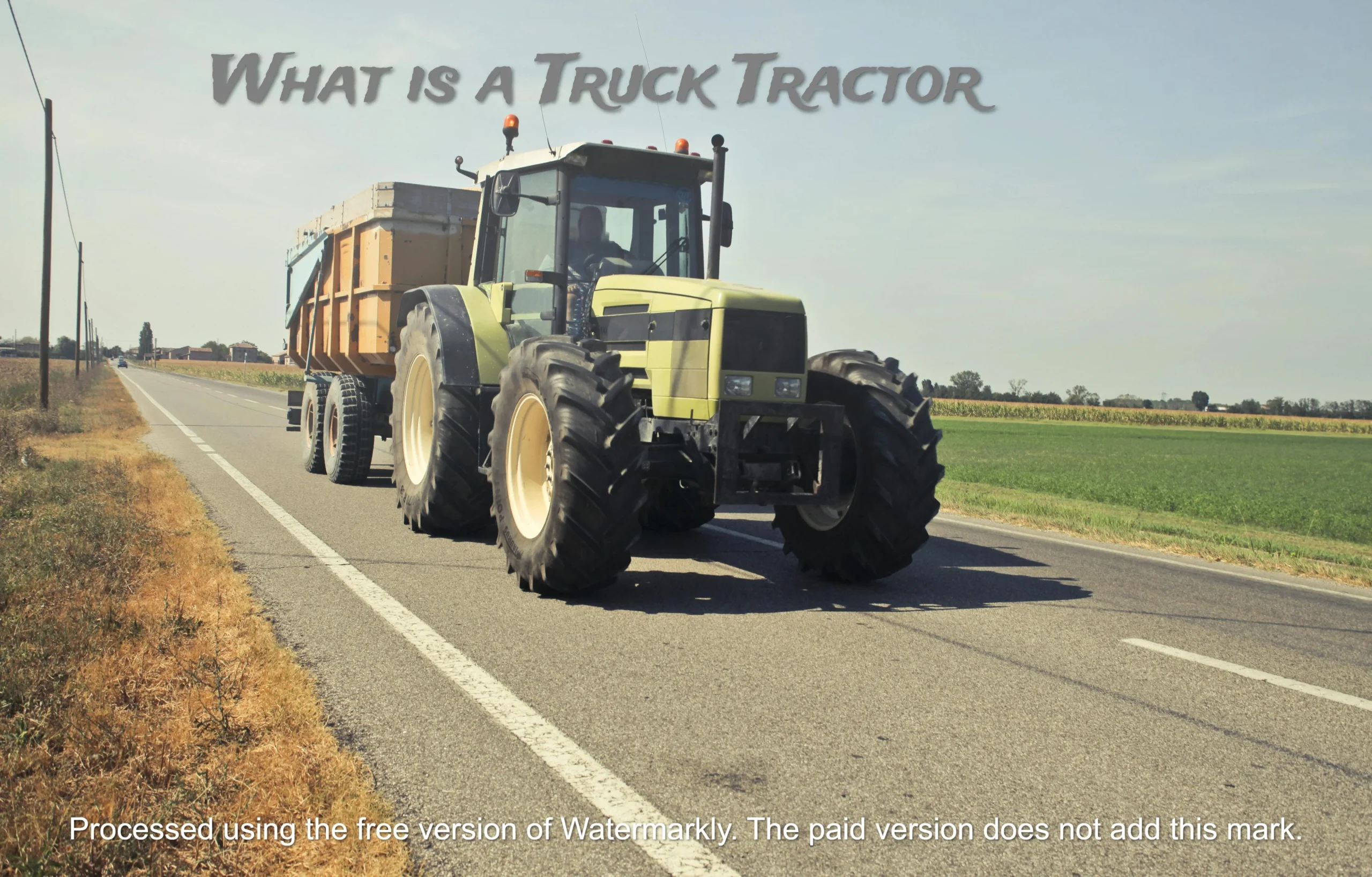A truck tractor, often referred to simply as a tractor, is a powerful vehicle designed primarily to tow semi-trailers on highways and roads. It consists of a powerful engine, a cab for the driver, and a fifth wheel for attaching the semi-trailer. Truck tractors are commonly used in the transportation industry for hauling goods over long distances efficiently.
Introduction
In the vast world of commercial transportation, truck tractors play a pivotal role in ensuring the efficient movement of goods across cities, states, and even countries. These powerful vehicles are the workhorses of the trucking industry, responsible for hauling trailers and semi-trailers loaded with cargo over long distances. Whether it’s delivering essential supplies to remote areas or transporting raw materials to manufacturing facilities, truck tractors are the backbone of our modern logistics network.
This article aims to provide a comprehensive understanding of truck tractors, delving into their purpose, types, and the crucial role they play in our economy. We’ll explore the various components that make up these mighty machines, their evolution over time, and the regulatory standards that govern their operation. Additionally, we’ll examine the impact of technological advancements on truck tractors and the emerging trends shaping the future of this industry.
By the end of this article, you’ll have a deep appreciation for the significance of truck tractors and a thorough understanding of their essential functions in keeping our supply chains moving smoothly.
What is a Truck Tractor?
A truck tractor, also known as a semi-truck or a semi-tractor, is a specialized vehicle designed to pull semi-trailers or other types of trailers. Unlike traditional trucks, which carry cargo within their own body, truck tractors are primarily used to provide the power and mobility necessary to transport trailers loaded with goods.
Key Components of a Truck Tractor
To better understand the functionality of a truck tractor, let’s explore its key components:
Cab and Sleeper Berth
The cab, or the driver’s compartment, is where the operator controls the vehicle. It typically features ergonomic seating, advanced instrumentation, and various controls for safe and efficient operation. Many truck tractors also include a sleeper berth, which allows drivers to rest during long-haul trips, ensuring compliance with regulations and promoting safety on the roads.
Engine and Transmission
The heart of a truck tractor lies in its powerful engine, which generates the necessary torque and horsepower to pull heavy loads. Diesel engines are commonly used due to their reliability, fuel efficiency, and ability to generate high torque levels. These engines are paired with robust transmissions that facilitate smooth gear shifting and efficient power transfer to the drive axles.
Chassis and Suspension
The chassis of a truck tractor is designed to withstand the immense weight and stress of hauling trailers. It features a sturdy frame and a suspension system that ensures a smooth ride, even when carrying heavy loads. The suspension also plays a crucial role in maintaining control and stability, particularly during turns and on uneven terrain.
Fifth Wheel Coupling
One of the most distinctive features of a truck tractor is the fifth wheel coupling, a specialized mounting system that connects the tractor to the trailer. This coupling allows for articulated movement between the tractor and the trailer, facilitating tight turns and maneuverability while ensuring a secure connection.
Types of Truck Tractors
Truck tractors come in various configurations to suit different transportation needs and operational requirements. Here are some of the most common types:
Conventional Truck Tractors
Conventional truck tractors, also known as classic or standard truck tractors, feature a cab mounted over the engine, providing a traditional and recognizable silhouette. These tractors are commonly used for long-haul and regional transportation, offering a balance between power, efficiency, and driver comfort.
Cab-Over-Engine (COE) Truck Tractors
In contrast to conventional truck tractors, cab-over-engine (COE) truck tractors have the cab positioned directly over the engine, resulting in a shorter overall length. This design is advantageous for urban and tight maneuvering environments, where a shorter wheelbase is beneficial. COE truck tractors are often used for local deliveries and short-haul operations.

Specialty Truck Tractors
Depending on the industry and the type of cargo being transported, specialized truck tractors may be employed. Examples include:
- Heavy-Haul Truck Tractors: Designed to handle exceptionally heavy loads, such as machinery, oversized equipment, or large industrial components.
- Tanker Truck Tractors: Equipped with specialized tanker trailers for transporting liquid or gaseous cargo, such as fuel, chemicals, or liquefied gases.
- Lowboy Truck Tractors: Featuring a lower deck height, these tractors are used to haul heavy equipment or oversized loads that cannot be transported on a standard trailer.
- Alternative Fuel Options
- To address environmental concerns, the trucking industry is exploring alternative fuel options for truck tractors, such as:
- Natural Gas: Both compressed natural gas (CNG) and liquefied natural gas (LNG) are cleaner-burning alternatives to diesel fuel and can help reduce emissions.
- Biodiesel: Derived from renewable sources like vegetable oils or animal fats, biodiesel can be blended with conventional diesel fuel to lower emissions and improve sustainability.
- Electric and Hybrid Powertrains: While still in the early stages of development, electric and hybrid truck tractors are being explored as potential solutions for reducing emissions and improving fuel efficiency.
The Importance of Truck Tractors in the Supply Chain
Truck tractors play a crucial role in maintaining the smooth flow of goods and materials throughout the supply chain. Their importance can be highlighted by the following factors:
Efficient Freight Transportation
By hauling trailers loaded with cargo, truck tractors facilitate the efficient transportation of goods over long distances. They are essential for moving raw materials from production sites to manufacturing facilities, as well as delivering finished products to distribution centers and retailers.
Connectivity and Accessibility
With their ability to navigate various terrains and reach remote locations, truck tractors provide crucial connectivity and accessibility to areas that may be inaccessible or impractical for other modes of transportation. This ensures that goods and supplies can reach even the most isolated communities and industries.
Economic Impact
The trucking industry, powered by truck tractors, plays a vital role in driving economic growth and development. It supports countless businesses and industries by enabling the timely delivery of goods and materials, contributing significantly to local, national, and global economies.
Employment and Job Creation
The truck tractor industry is a major source of employment, providing job opportunities for drivers, mechanics, logistics professionals, and many other supporting roles. As the demand for freight transportation continues to grow, so does the need for skilled professionals in this field.
Regulations and Safety Standards
Operating truck tractors safely and responsibly is of utmost importance to protect drivers, other road users, and the environment. To ensure this, various regulations and safety standards have been established:
Emission Standards
Truck tractors are subject to stringent emission standards set by regulatory bodies to minimize their environmental impact. These standards aim to reduce harmful pollutants, such as nitrogen oxides (NOx) and particulate matter (PM), emitted by diesel engines.
Hours of Service (HOS) Regulations
To promote driver safety and prevent fatigue-related accidents, Hours of Service (HOS) regulations govern the number of hours a truck driver can operate a commercial vehicle. These regulations mandate rest periods and limit the maximum driving time allowed within a specific timeframe.
Vehicle Inspection and Maintenance
Regular vehicle inspections and maintenance are critical for ensuring the safe operation of truck tractors. Regulations outline specific requirements for inspecting and maintaining various components, such as brakes, tires, lighting systems, and overall vehicle condition.
Driver Training and Qualifications
Truck drivers must undergo specialized training and obtain the necessary licenses and endorsements to operate truck tractors. These requirements ensure that drivers possess the knowledge, skills, and qualifications to handle these powerful vehicles safely and responsibly.

Technological Advancements in Truck Tractors
Like many industries, the truck tractor sector has witnessed significant technological advancements aimed at improving efficiency, safety, and environmental sustainability. Here are some notable developments:
Alternative Fuel Options
To reduce dependence on fossil fuels and minimize environmental impact, truck manufacturers are exploring alternative fuel options for truck tractors. These include:
- Electric and Hybrid Truck Tractors: Utilizing electric or hybrid powertrains to reduce emissions and improve fuel efficiency.
- Natural Gas Truck Tractors: Powered by compressed natural gas (CNG) or liquefied natural gas (LNG), offering a cleaner-burning alternative to diesel.
- Hydrogen Fuel Cell Truck Tractors: Utilizing hydrogen fuel cells to generate electricity, producing zero direct emissions.
Advanced Driver Assistance Systems (ADAS)
ADAS technologies are being integrated into truck tractors to enhance driver safety and reduce the risk of accidents. These systems include features such as:
- Forward Collision Warning and Automatic Emergency Braking
- Lane Departure Warning and Lane Keeping Assist
- Blind Spot Monitoring and Automatic Trailer Tracking
- Adaptive Cruise Control and Intelligent Speed Assistance
Telematics and Fleet Management Solutions
Telematics and fleet management solutions are revolutionizing the way truck tractors are monitored and operated. These systems provide real-time data on vehicle performance, location, and driver behavior, enabling more efficient route planning, preventive maintenance, and overall fleet optimization.
Autonomous and Semi-Autonomous Driving
While still in the development and testing phases, autonomous and semi-autonomous driving technologies are being explored for truck tractors. These advancements aim to improve safety, reduce driver fatigue, and enhance operational efficiency by automating certain driving tasks or enabling fully autonomous operation in certain scenarios.
Environmental Impact and Sustainability
As the demand for freight transportation continues to grow, addressing the environmental impact of truck tractors has become a priority. Manufacturers, regulators, and industry stakeholders are actively pursuing strategies to minimize the carbon footprint and promote sustainability in this sector.
Emission Reduction Strategies
Various emission reduction strategies are being implemented to lower the environmental impact of truck tractors, including:
- Stricter emission standards and regulations
- Development of more efficient and cleaner burning engines
- Adoption of alternative fuel technologies
- Aerodynamic design improvements to reduce drag and improve fuel efficiency
Sustainable Logistics and Route Optimization
Logistics companies and fleet operators are embracing sustainable practices by optimizing routes and implementing strategies to reduce unnecessary travel and idling. This includes leveraging advanced telematics and route planning software to minimize fuel consumption, emissions, and overall environmental impact.
Recycling and End-of-Life Management
Responsible end-of-life management of truck tractors is crucial for minimizing waste and promoting sustainability. Manufacturers and recycling facilities are implementing processes to efficiently disassemble and recycle various components, such as metals, plastics, and fluids, reducing the need for new raw materials.
Conclusion
Truck tractors are the unsung heroes of the transportation industry, playing a vital role in keeping our supply chains moving and our economies thriving. From their powerful engines and sturdy chassis to their specialized coupling systems and advanced technologies, these vehicles are engineered to tackle the demands of long-haul and regional freight transportation.
As we look to the future, the truck tractor industry will continue to evolve, embracing innovative solutions to address environmental concerns, improve safety, and enhance operational efficiency. Alternative fuel technologies, advanced driver assistance systems, and autonomous driving capabilities are just a few examples of the transformative changes on the horizon.
Despite these advancements, the fundamental purpose of truck tractors remains unchanged – to reliably and efficiently transport goods across vast distances, connecting businesses and communities, and keeping our supply chains strong and resilient.
Whether you’re a transportation professional, a logistics enthusiast, or simply someone who appreciates the intricacies of modern engineering, understanding the complexities and significance of truck tractors is essential in our interconnected world.
FAQs
1. What is the difference between a truck tractor and a semi-truck?
A truck tractor and a semi-truck are often used interchangeably, but there is a subtle difference. A truck tractor refers specifically to the vehicle that provides the power and mobility to pull a semi-trailer or other types of trailers. It does not carry cargo within its own body. On the other hand, a semi-truck is a more general term that encompasses both the truck tractor and the attached semi-trailer, forming a complete tractor-trailer combination.
2. How long can a truck tractor safely operate before needing maintenance?
The maintenance intervals for truck tractors vary depending on factors such as the manufacturer’s recommendations, the type of usage, and the operating conditions. In general, most truck tractors require regular maintenance every 25,000 to 30,000 miles or every 6 to 12 months, whichever comes first. This includes services like oil changes, filter replacements, brake inspections, and other critical checks to ensure safe and reliable operation.
3. What is the purpose of the fifth wheel coupling on a truck tractor?
The fifth wheel coupling is a specialized mounting system that connects the truck tractor to the semi-trailer or other types of trailers. It allows for articulated movement between the tractor and the trailer, enabling tight turns and maneuverability while maintaining a secure connection. The fifth wheel coupling is designed to handle the immense weight and forces involved in hauling heavy loads, making it a crucial component for safe and efficient freight transportation.
4. How do truck tractors comply with emission regulations?
Truck manufacturers employ various strategies to ensure that truck tractors comply with emission regulations set by regulatory bodies. These strategies include:
- Implementing advanced emission control technologies, such as exhaust gas recirculation (EGR) and selective catalytic reduction (SCR) systems.
- Developing more efficient and cleaner-burning diesel engines that produce fewer pollutants.
- Exploring alternative fuel options, such as natural gas, electric, and hydrogen fuel cell powertrains, to reduce or eliminate tailpipe emissions.
- Incorporating aerodynamic design elements to improve fuel efficiency and reduce overall emissions.
5. What are the typical weight and length restrictions for truck tractor-trailer combinations?
Weight and length restrictions for truck tractor-trailer combinations vary by jurisdiction and are governed by local and federal regulations. In the United States, the maximum gross vehicle weight (GVW) for a tractor-trailer combination is typically 80,000 pounds (36,287 kg) on interstate highways. The maximum overall length, including the tractor and trailer, is generally limited to 53 feet (16.15 meters) for semi-trailers on interstate highways, although some states may have different regulations for non-interstate roads.
